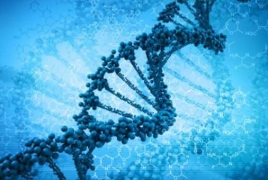Scientists discover a low-cost way to build genomes from scratch March 27, 2017 - 17:14 AMT PanARMENIAN.Net - In 2003, the US Department of Defense and the National Institutes of Health announced that—13 years and $2.7 billion later—they had finally finished mapping the human genome. But the quest to understand human genetics was far from over: Genomes, which are the entire layout of our 3 billion base pairs of DNA, vary dramatically from person to person. So mapping the first human genome was really just mapping a human genome (the patient’s identity was kept secret for privacy.) And even though shorter genetic sequencing is available, doctors studying rare genetic diseases need the full scope of a patient’s genetic material to find the problematic mutation. Finding these faulty sections of genes is like a microscopic version of Where’s Waldo among 3 billion people wearing stripes, a game that has cost $3 billion to play. In a paper published in Science on March 23, researchers from the Baylor College of Medicine, Massachusetts Institute of Technology, and Harvard University said they have figured a way to sequence the entirety of any genome for just $10,000, in a couple of weeks, Quartz reports. Their test project? Re-sequencing the DNA of the mosquito species that spreads the Zika virus. Previously, scientists sequenced genomes by piecing together smaller snippets of genetic code using computers. It was difficult to be sure where the smaller sections were supposed to connect, in part because in cells, DNA isn’t a single long molecule: instead, it’s folded like molecular origami to squeeze two meters (6.5 feet) of genetic material into each cell’s nucleus. “It’s like a puzzle that’s missing a few pieces from the box,” Daniel Neafsey, geneticist at the Broad Institute Massachusetts and co-author of the paper, told Nature. But in the new method, which researchers are calling “3D assembly,” researchers were able to use the creases in DNA to guide them as they put together these shorter sequences. Because researchers are using the natural form of the sample of DNA instead of comparing them to existing sequences, costs are dramatically lower, the Houston Chronicle reports. To prove that this method works, researchers sequenced the entire genomes of an Aedes agypti mosquito, which carries the Zika virus. Although this work had been done back in 2007, it wasn’t a complete genetic picture of the insect because scientists weren’t sure how all the DNA pieces fit together. Although scientists have some fine-tuning to do to the 3D-assembly method, they believe that they now have a clearer picture of the mosquitoes’ genes, and can start to make them less able to transmit infections. Researchers hope that this technique will go beyond human patients and mosquitoes. “Because the genome is generated from scratch, 3D assembly can be applied to a wide array of species, from grizzly bears to tomato plants,” Erez Lieberman Aiden, a geneticist at the Baylor College of Medicine and co-author of the paper, said in a statement. “And it is pretty easy.” Authorities said a total of 192 Azerbaijani troops were killed and 511 were wounded during Azerbaijan’s offensive. In 2023, the Azerbaijani government will increase the country’s defense budget by more than 1.1 billion manats ($650 million). The bill, published on Monday, is designed to "eliminate the shortcomings of an unreasonably broad interpretation of the key concept of "compatriot". The earthquake caused a temporary blackout, damaged many buildings and closed a number of rural roads. Partner news |